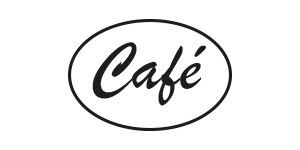Like every organisation charities need technology. More than most, they need it to be extremely cost effective and rarely have internal staff with the time to deal with complex technical tasks. I recently offered to help a small, volunteer-led charity find a CRM, and learned a lot from the experience. There is a world of low-cost, feature rich applications aimed at this end of the market, and sorting through to find the best for my client’s needs was a worthwhile journey and gave me the chance to think through how to approach this type of engagement at this smaller scale.
Understanding the need
I started by developing a big picture of the organisation, interviewing key people and reading documents to understand the components and landscape :
- Stakeholders – volunteers, clients / service users, donors, members, staff, trustees, partners, government organisations and everyone else in our world
- Processes – services offered, managing volunteers and members, fundraising
- Technology – what do they already have, and how well does it meet their needs
- Information – the information used and created
I looked at the strategy, and the concerns that people raised. The new CRM would need to take them into the future, and address current problems.
This quickly clarified core requirements. Volunteer management and case management are the key processes. Fundraising, donor and membership management are needed, but can be kept to the basics. Other organisations will have a different emphasis, but these key processes are very common in the charity world.
As well as functional requirements, it was important to find something that gave :
- An online service, so there was no need to manage their own infrastructure
- Good technical security, with ISO 27001 certification and good support for GDPR. Dealing with vulnerable clients puts a high emphasis on security.
- Easy to use on a range of devices as volunteers will want to record outcomes using phones as well as laptops and tablets
- Easy to set up and run. Most packages provide extensive customisation capabilities, but something that already supported our key processes keeps setup work to a minimum.
- Good, and reasonably priced, support.
Which Charity CRM ?
Now, the need was clear. The next task was to find a good product, which met the limited budget.
We assembled a team of key volunteers to review the alternatives and decide which would be best. My job would be to guide the team, providing support and information, while making sure that all aspects are covered properly. We would meet regularly for demos and discussions of features. Of course, with the pandemic, this was all done online, so the meetings could be recorded.
I’ve a lot of experience with MS Dynamics CRM, so took a look at their Nonprofit Accelerator. This offers considerable value but would be expensive to set up and run for a very small charity, even at charity rates. Salesforce equally offers a lot, but is probably overkill for a small organisation.
Other tools are more oriented towards donor management and fundraising. eTapestry would be a strong contender for a more donor / membership oriented charity. Hubspot is great for a consultancy or sales organisation but would need a lot of customisation.
The final two – CharityLog and Lamplight
We selected two products, CharityLog and Lamplight, to do a deep dive. I set up trial scenarios for the rest of the team to use, and the vendors offered us demonstrations. They both spent time with me answering questions, and had very comprehensive documentation and manuals.
Both products provide good support for volunteer and case management, and can be set up to deal with donors and members. Their costs are similar, and under £500 per year for unlimited numbers of users.
CharityLog was originally developed for AgeUK, and has three tiers, allowing a charity to grow from the most basic level to the more advanced one. It has a good security model, allowing volunteers users to be restricted to only seeing their own clients and only essential information about those clients.
Lamplight has a large customer base and the easiest user interface we saw. It particularly deals well with complicated meetings with multiple clients and volunteers, something we need. Its integration with MailChimp will make it easy to manage mail outs too.
After the deep dives, the team is ready to make a decision between these two, and it is a close-run thing. The next step will be implementation – the hard work begins.
Steps to selecting a Charity CRM
This pattern works well to get to a decision on a new product. There’s no rocket science here, just a clear, step by step path to guiding the client to technology which is right for them.
- Start with a business map, outlining capabilities, roles, technology and the wider landscape. With a clear understanding of strategy and current concerns, this is the basic Enterprise Architecture starting point.
- Identify requirements, both functional and non-functional, and establish a clear set of criteria to compare alternatives
- Assemble a team of internal stakeholders to work with
- Review the market and see what is available. Consider the familiar, but make sure you look widely. In some circumstances, an RFI may be appropriate at this step.
- Do a detailed comparison of a shortlist. Do a formal RFP at this stage if necessary. Set up trial scenarios based on your own use cases and work with them. Do references and commercial checks. Check the technology used.
- Support team members to try out the products and make their own evaluations
- Bring everyone together and discuss findings. Help the team come to a consensus
- Write it all up and make the recommendation.
If you’re interested in a similar service, please get in touch on LinkedIn, or by email.
Author
Other articles by Cathryn Symons.

